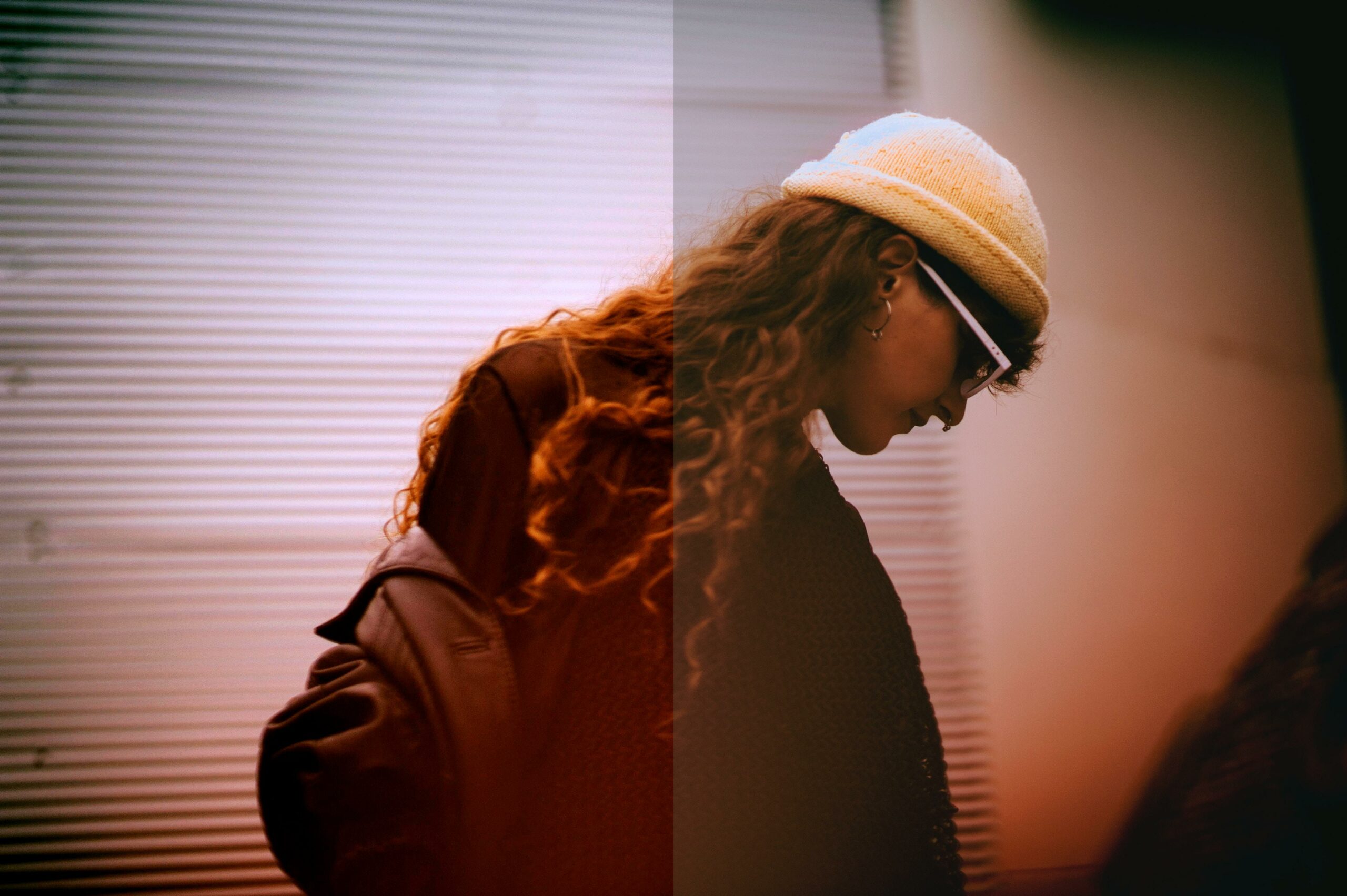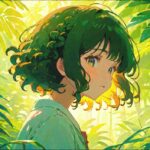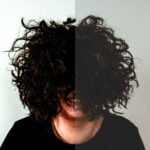Anticipate entering a realm adorned with enchanting splendor as we reveal the concealed truths behind the curvaceous marvels of nature. This article will undertake an enthralling exploration of the captivating spirals and twists that are ubiquitous in nature, including gracefully coiled ferns, delicate seashells, and intricately spiraling vines. Unveil the enigmas surrounding these wavy pleasures, and be prepared to be astounded by the marvelous patterns and intricate designs that nature reveals in front of us. Therefore, fasten your seatbelts and accompany me on this expedition as we reveal the mesmerizing allure of curly natural objects.
Curly Things in Nature
The allure of nature is evident in its multitude of varied and enthralling configurations. Curly marvels occupy a unique position as one of a multitude of forms and designs discovered in nature. The graceful fern fronds and delicate spiraling seashells are just two examples of the curly marvels in nature that never cease to astound. This article aims to explore the captivating domain of naturally occurring curly objects and reveal the secrets that underlie their captivating aesthetics.
Animals Showcasing Curly Aspects
Upon additional inspection of the animal kingdom, we discover a multitude of creatures that possess curly characteristics. Consider an elegant alpaca adorned with opulent, spiral-shaped fur or an Angora goat displaying a captivating mane of ringlets. We are adorned with the delectable curls of Mangalica pigs, which have woolly spiral hair, and rex cats, which are renowned for their short, curly coats. Furthermore, it is worth noting the frillback pigeon, whose plumage gracefully descends in a series of waves. These creatures serve as a reminder that the ingenuity of nature transcends the domain of flora to encompass the realm of fauna.
“From alpacas to rex cats, animals with curly features showcase nature’s creativity in a truly enchanting way.”
Fibonacci Spirals and the Golden Ratio
Two well-known examples of natural phenomena that enjoy adhering to particular patterns are the Golden Ratio and Fibonacci spirals. There are numerous natural phenomena that illustrate these mathematical principles. The ratio in question, frequently symbolized by the Greek letter phi (ϳ), is observed in numerous natural phenomena, including the helical configuration of seeds within a sunflower and the morphology of a seashell. Likewise, the growth patterns of pinecones and the curved forms of nautilus shells are examples of Fibonacci spirals, which originate from the Fibonacci sequence (where each number is the sum of the two preceding ones). These patterns not only enthrall our visual senses but also stand as evidence of the intrinsic equilibrium and harmony that are innate to the natural world.
“When it comes to curvy wonders, nature follows precise patterns like the Golden Ratio and Fibonacci spirals, creating a visually harmonious tapestry.”
Curly Fur on Anime
Although curly hair is uncommon among animals, certain marsupials and primates do possess these alluring manes. These animals, ranging from specific baboons and gorillas with coiled manes to koalas and wombats with curly fur, each exhibit the distinctive beauty of curls in their own unique manner. It is commonly believed that curly hair aids in heat retention and insulation, especially in frigid climates. Such is the manner in which these animals are assisted by nature in adjusting to their surroundings and prospering.
“Curly-haired primates and marsupials possess an alluring charm while also enjoying the practical benefits of insulation and heat retention.”
Spirals Found in Nature
There are a variety of spiral shapes found in nature, including planar curves and three-dimensional marvels. Imagine the intricate spirals formed by the tendrils of a climbing vine as they ascend towards the sun, or the elegant undulations of the outermost layer of a seashell. These spirals fulfill aesthetic and functional objectives. Plants benefit from their assistance in growth and the structural support they offer. Their intricate spiral patterns aid in the protection of the delicate organisms contained within seashells. Spirals found in nature serve as an embodiment of the harmonious interaction between sophistication and efficiency.
“Nature has a fondness for spirals, using them to achieve both beauty and functionality in its creations.”
Difficulties Confronting Curly Birch Trees
Although numerous curly marvels in nature flourish, others encounter obstacles and are at risk of extinction. An illustration of this is the curly birch tree. The regeneration of these magnificent trees, characterized by their intricately contorted branches and distinctive curling bark, is a pressing concern, especially in areas where anthropogenic activities have caused disturbances to their native environments. It is essential that conservation efforts be made to ensure the continued existence of these extraordinary trees and to safeguard the curly heritage they possess.
“Curly birch trees grace us with their enchanting presence, but their survival hinges upon our dedication to preserving and restoring their habitats.”
Relationships between genes and hair texture
Curly hair has genetic underpinnings in addition to cosmetic and functional considerations. Recent research has illuminated the correlation between hair texture and climate adaptation. As an adaptation to milder climates, straight hair might have developed to facilitate more efficient heat dissipation. Conversely, curly hair might have conferred benefits in warmer regions through the provision of a certain degree of solar protection. A deeper comprehension of the intricate interplay among genetics, adaptation, and nature can be achieved by establishing the genetic underpinnings of hair texture.
“The genetic connections behind hair texture reveal nature’s nuanced adaptations to different climates and environments.”
Curly Hair: Beautiful Waves
Finally, let us delve into the complexities inherent in curly hair. Curly hair possesses a distinct appeal, be it sleek tresses that cascade like ocean ripples or tightly coiled strands that exude vitality. The wide variety of curl textures and patterns is evidence of the inexhaustible inventiveness of nature. Dynamic shapes are created by waves and spirals in hair strands, which add depth and individuality to each person. Acknowledging the intrinsic allure of curly hair signifies not only a celebration of diversity but also a recognition of the intrinsic splendor inherent in the unexpected turns and developments of nature.
“Curly hair weaves a mesmerizing tapestry of waves and curls, adding depth and character to nature’s palette of beauty.”
In summary, the curly marvels of the natural world provide an insight into the complex and captivating realm that operates beyond the scope of human understanding. The aesthetic appeal of curly hair, spirals in nature, animals possessing curly features, and genetic relationships all harmonize in a magnificent symphony of naturally occurring curly pleasures. While we investigate and appreciate these curvaceous phenomena, may we never lose our awe at the enchantment of nature and its capacity to enchant our senses with its curly marvels.
(Note: The content of this article is solely for informational purposes and should not be construed as medical or scientific advice. (Please seek guidance from a certified expert when confronted with any particular inquiries pertaining to the aforementioned subjects.)
Curly hair possesses an abundance of distinctive qualities and attributes that render it utterly captivating. Curly hair possesses an extensive variety of textures and patterns, in addition to its inherent volume and movement, which are all characteristics that may be outside your awareness. If you are interested in learning more about this lovely hair type, consider the following fascinating information regarding curly hair: You will be astounded by the multitude of benefits that curly hair can provide!
To learn the intricacies of curly hair and unveil its secrets, please refer to the following link for an exhaustive compilation of facts concerning curly hair. Whether you possess curly hair or simply admire its aesthetic appeal, this resource will furnish you with significant knowledge regarding the realm of curls. So, don’t miss out on the opportunity to enhance your knowledge about all things curly hair!
An enchanting phenomenon that captivates our attention exists in the vast domain of nature: curly plants in nature. These captivating botanical marvels exhibit elaborate curves and diversions, imbuing the natural environment with an air of capriciousness. Imagine yourself traversing a verdant woodland where gracefully curled fern stalks animate in the wind, beckoning you on an ethereal odyssey. Experience the magic of these natural sculptures for yourself by clicking here: Curly Plants in Nature.
Nature consistently astonishes us with its boundless ingenuity, and curly patterns in the natural world are among its most delectable manifestations. These intricate patterns, which range from the mesmerizing formation of waves cascading on the shore to the intricate swirls of a snail’s shell, serve as evidence of the splendor that thrives in the natural environment. Embark on a visual exploration of these captivating patterns by following this link: Curly Patterns in Nature.
If you’ve ever marveled at the extraordinary structures found in nature, you won’t want to miss the captivating world of curly structures. From the majestic spirals of a ram’s horn to the intricate tendrils of a vine, these remarkable formations captivate our imagination. Venture into this extraordinary realm by clicking here: Curly Structures in Nature.
FAQ
Initial Question
What are some naturally occurring animals that possess curly features?
Initial Response
Natural creatures that possess curly features comprise frillback pigeons, alpacas, Angora goats, rex cats, and Mangalica pigs.
Second Question
What is the relationship between the Golspirals,io and Fibonacci spirals and the natural world?
Answer Two
Patterns discovered in nature include the Fibonacci spirals and the Golden Ratio. The Golden Ratio, a mathematical proportion, has been empirically documented in various natural phenomena, including the seed arrangement within a sunflower and the proportions found in a seashell. In contrast, Fibonacci spirals are a succession of spirals that adhere to the mathematical sequence Fibonacci, in which the value of each subsequent number is equal to the sum of the two antecedent ones. The shape of a pinecone or the arrangement of foliage on a stem are both examples of these spirals in action.
Third Question
Does every animal possess curly hair?
Three Answers
While curly hair is uncommon in most creatures, certain marsupials and primates do possess it.
Fourth Question
What function do mammals’ curly hairs serve?
Response Four
In mammals, curly hair is believed to provide insulation and heat retention.
Cinquisite 5
Could you provide some natural examples of spirals?
5th Answer
There are numerous types of spirals found in nature, such as planar curves and three-dimensionalincludellustrative instances encompass spiraling seashells, intricately coiled ferns, and twisting tendrils.
- Senior at What Age: Benefits & Eligibility Guide - March 29, 2025
- Unlocking Senior Benefits: How Old is a Senior? Your Complete Guide - March 29, 2025
- Master Russian Politeness:A Guide to Saying Please - March 29, 2025
















